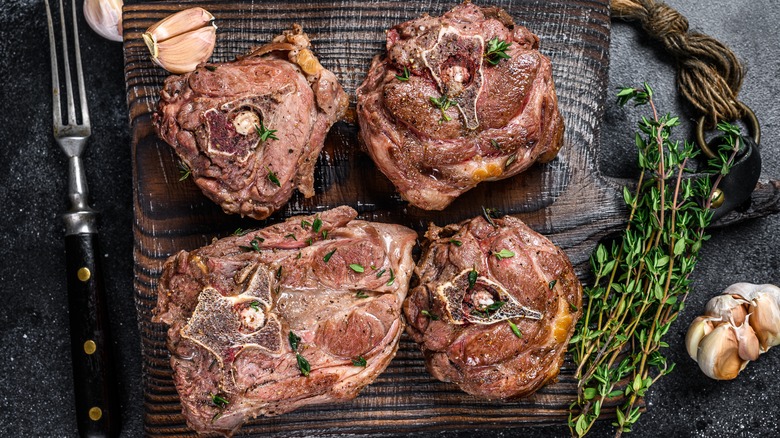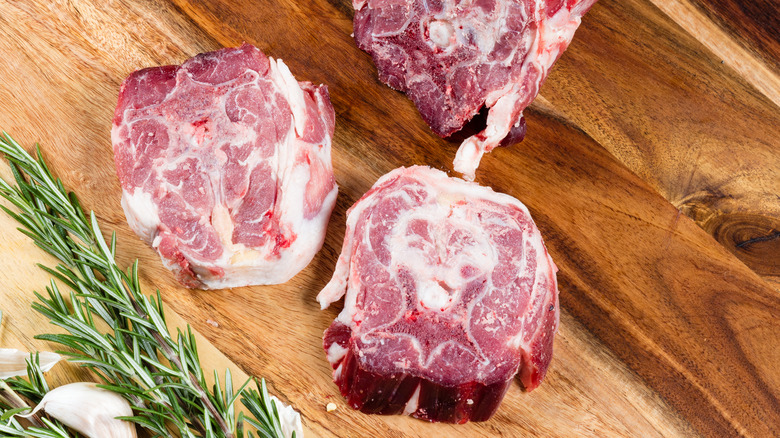Why Lamb Neck Belongs On More Restaurant Menus
As far as meats are concerned, lamb neck possesses unparalleled flavor and tenderness. This often overlooked and underappreciated cut is derived from the muscles surrounding the vertebrae, making it arguably the tastiest cut of lamb. Preparing lamb neck demands patience, skill, and care to unlock its full gastronomic splendor. Its allure lies in its composition — an interplay of lean muscles and succulent marbling — a crucial factor in high-quality meat. Through grilling, roasting, or slow cooking methods like braising or stewing, these collagen-rich connective tissues dissolve into a luscious, velvety texture with a flavor often described as a blend of umami and earthy intertwined with delicate hints of sweetness and gaminess, making it a perfect inclusion on more restaurant menus.
Lamb neck is a versatile cut of meat that lends itself to a plethora of recipes, from hearty stews and aromatic curries to elegant presentations fit for discerning palates. Lamb is consumed all around the globe, but especially in Mongolia, Bahrain, and Iceland. When lamb meat is served at eateries, consumers have the chance to savor a true global delight. For instance, Moroccan tagine is a soul-soothing comfort dish made in a vessel of the same name, often consisting of lamb neck seasoned with an array of spices, dried fruits, and herbs. Lamb neck can also be used to rustle up a French confit, in which the meat is slowly poached in rendered fat.
Lamb neck is a delicious, versatile cut of meat
The inclusion of lamb neck on restaurant menus offers a nod to sustainability and nose-to-tail cooking, an ethos that champions the utilization of every part of the animal out of respect for both the animal itself and the resources expended in its rearing. By showcasing lesser-known and underrated cuts of lamb, chefs not only reduce waste but also encourage diners to expand their horizons and embrace the diversity of the culinary world. Meals that can call for lamb neck, such as ragù, biriyani, and kebabs, allow patrons to get their protein fix while trying something new.
Lamb neck is a relatively inexpensive cut of meat from both a business and consumer perspective. Its affordable price is primarily due to the fact that it takes a bit more time and effort to prepare the tough, thick cut. For instance, to achieve the ideal fork-tenderness, lamb neck requires about 2-3 hours to braise in the oven and roughly 20 minutes to roast or grill.
Offering lamb neck on menus presents a unique opportunity for restaurants to distinguish themselves in an increasingly competitive market. By serving innovative lamb-centric dishes, chefs can attract adventurous diners while fostering a sense of trust and admiration for their commitment to quality and creativity. When treated with the reverence it deserves, lamb neck transcends its humble origins and pays homage to craftsmanship and resourcefulness.

